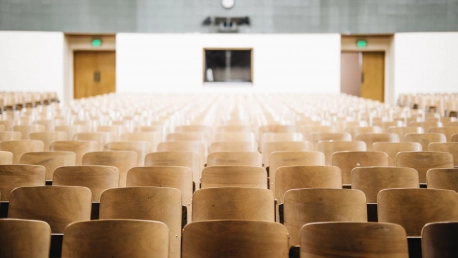The image of a professor giving lectures in front of a hall packed with students is not uncommon. It’s part of the academy ideal. But this year, things have changed, as the pandemic has significantly impacted universities and learners across the globe. Today, prospective and current students face novel challenges. So, what will academies do to meet students’ expectations and help them during unprecedented times?
This article explores several tactics that universities could implement to limit the impact of coronavirus on their students and improve services during and after a pandemic.
Embracing new technologies
Educational institutions have started embracing new technologies a few years ago. Today, accelerating the digital transformation is essential to keep the learning processes uninterrupted. Luckily, there are multiple online learning tools available on the market to help students during the pandemic.
However, in a recent survey of prospective international students, 39% of respondents rejected the idea of studying their degree online, while 61% are interested in going digital. It’s no doubt that the traditional campus is still a crucial part of the learning environment and students need its benefits to enhance their experience. But it’s also vital that social distancing continues to be in practice to lower the spread of the virus.
Moving classes into the online environment will also help prepare students for future employment opportunities, where communication happens in a digital world.
A more productive learning experience
In exchange, students expect a much richer experience in the online learning environment, with clearer structures, access to more resources, and a wide range of activities that would help them enhance their understanding and learning. It’s no surprise that students look to universities for guidance and reassurance.
However, learning from home, such as working from home, can sometimes be tricky. That’s why enhancing productivity with the help of some tips could create a richer learning experience. For example, listening to music can improve attention span and help students concentrate. Other tips could be: sticking to a schedule, taking handwritten notes, and having regular breaks.
Additionally, online educational platforms can help students by using analytics to track their performance and predict if they are likely to drop out. These tools give professors insights about what can be done and where more support is needed. Tracking students’ work is also a possible way to motivate them to improve their performance.
The value of in-person interactions
As long as interactions are safe, face-to-face meetings are essential to the learning processes and social skills development. And the opportunities to make connections and friendships during university are numerous, but how will they happen during the pandemic?
In preparation for participating in traditional lectures, universities need to ensure several measures, such as:
- Hand sanitizer widely available on campuses
- Access to dedicated health professionals
- Larger rooms for minimizing close contact in gatherings
Social interactions and in-person classes could boost well-being amid the uncertainty of the pandemic. So, universities must ensure a network to help students build meaningful experiences.
Conclusion
The latest changes have forced schools, colleges, and universities to be creative and do things differently, starting new, unknown journeys. As a result, 2021 will be an innovative and unique year for students participating in a massive shift in education practice.
Luckily, students and institutions today take on this responsibility with an open mind, ready to experiment with the new age of higher education.









